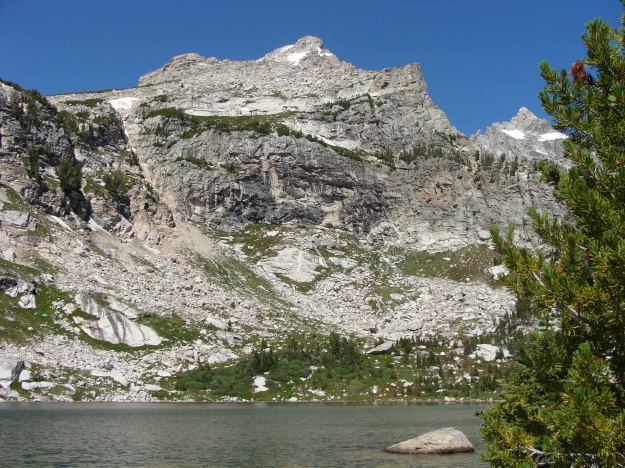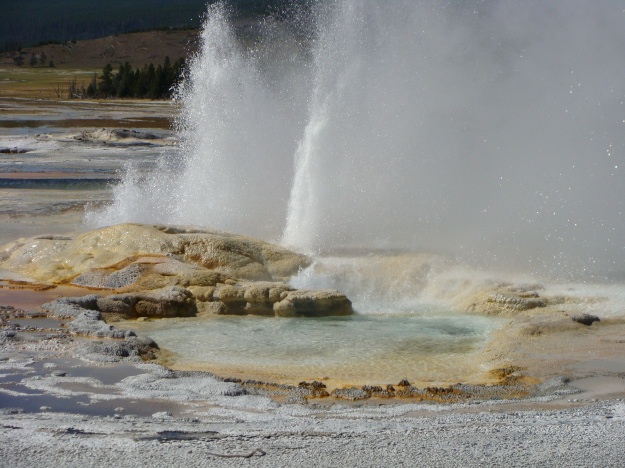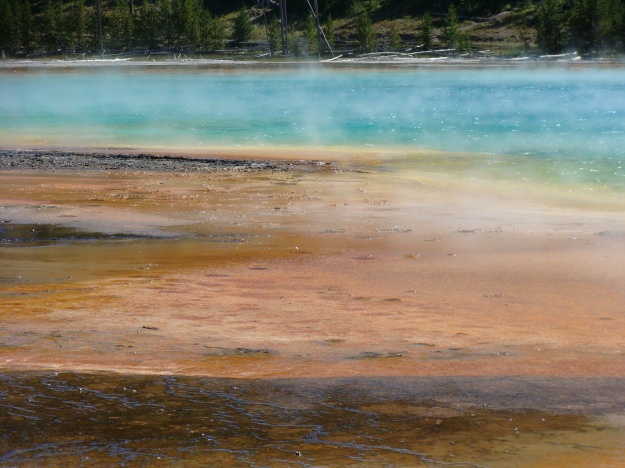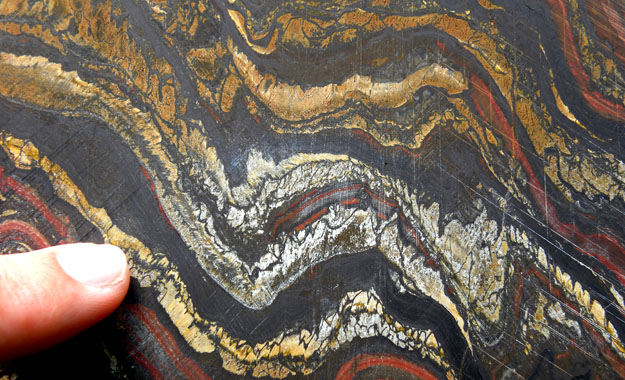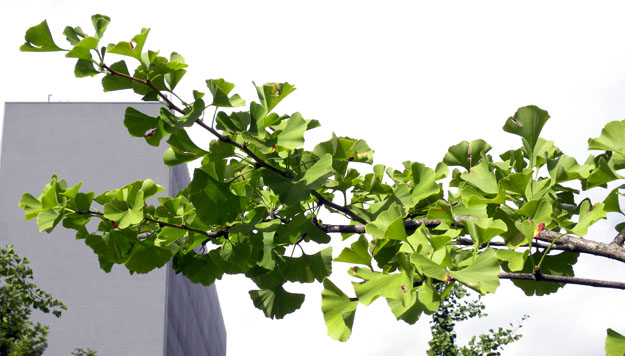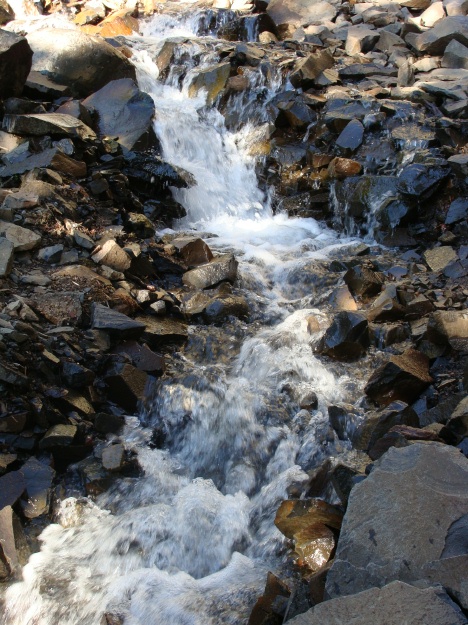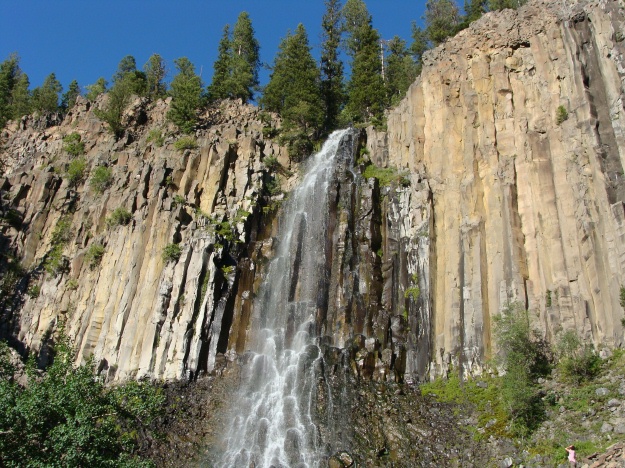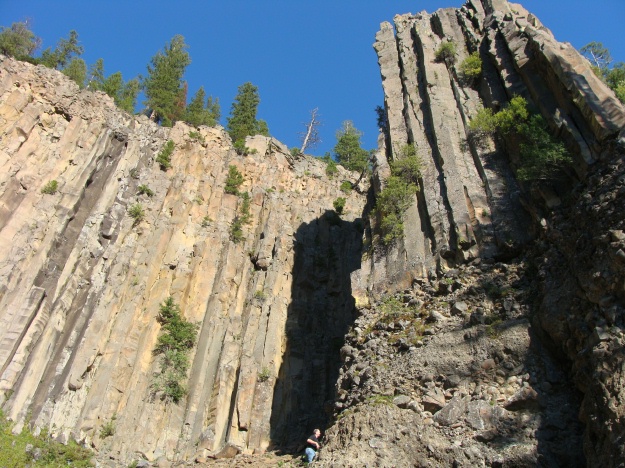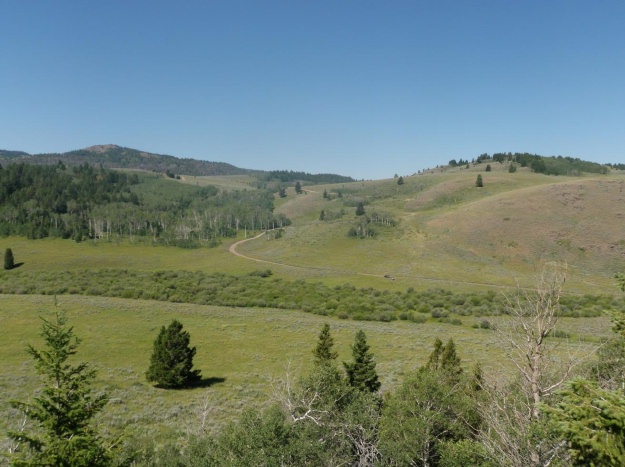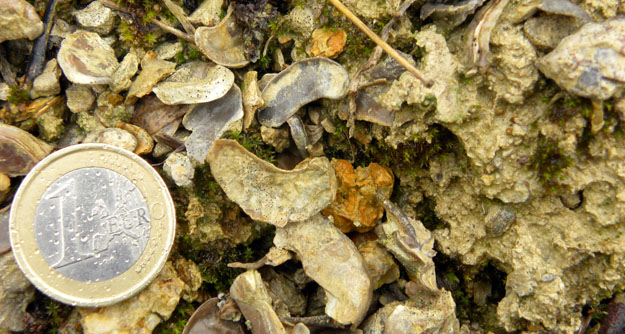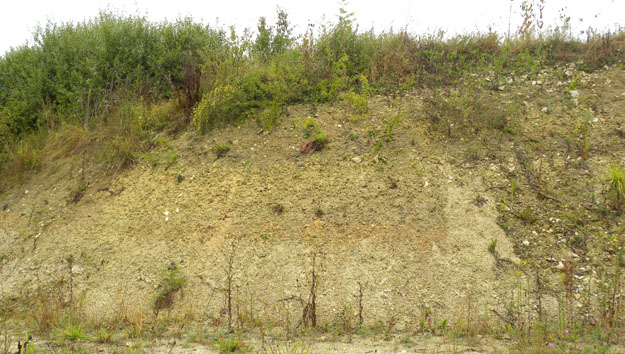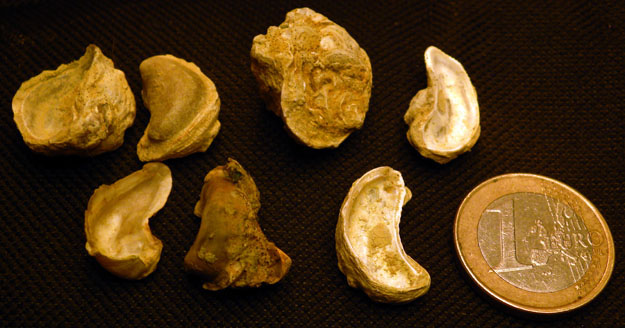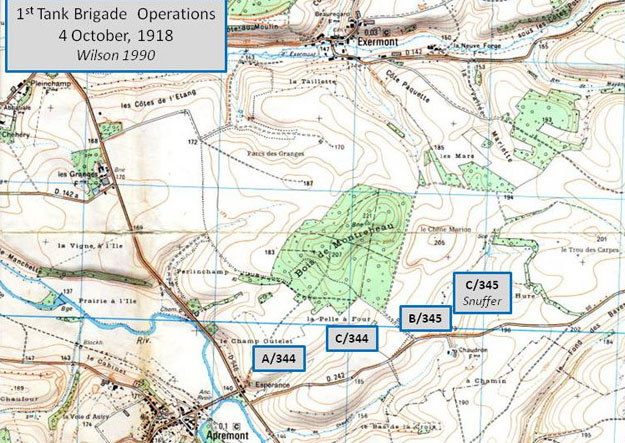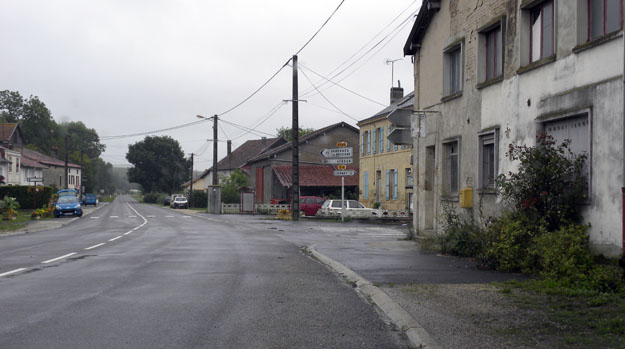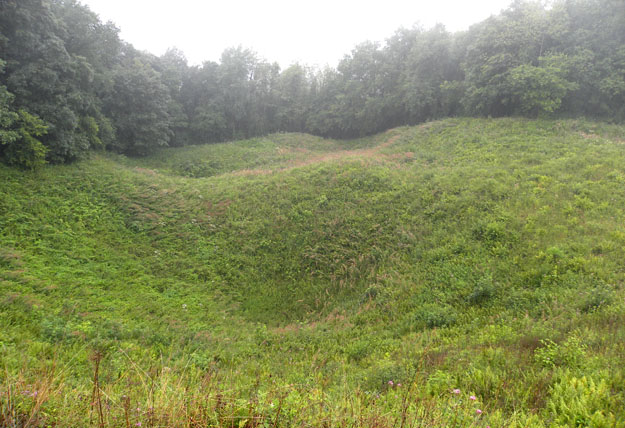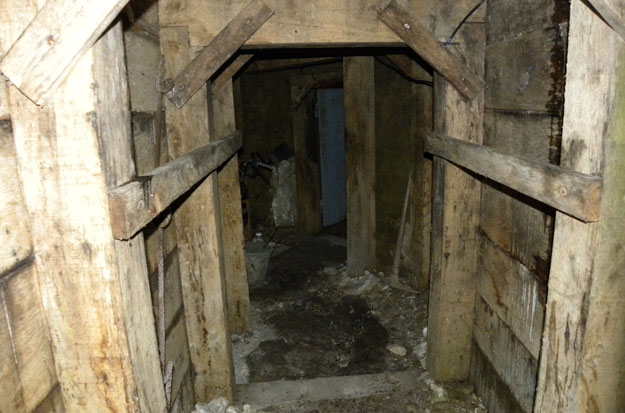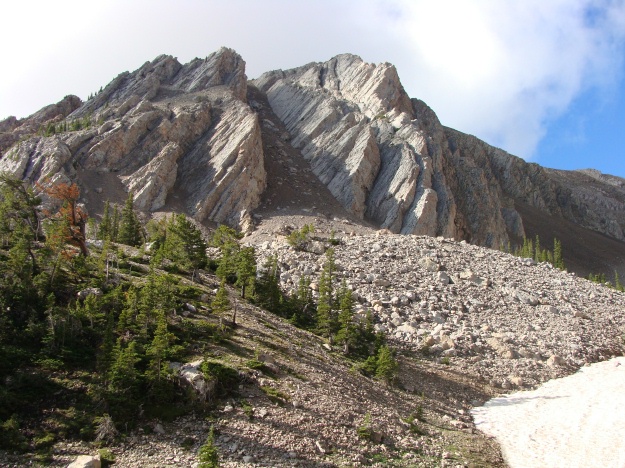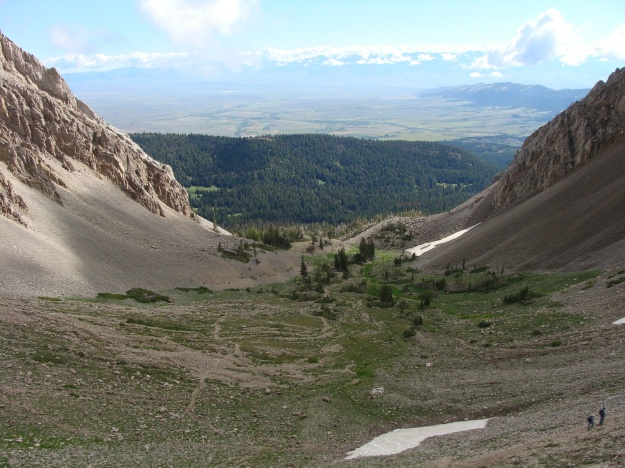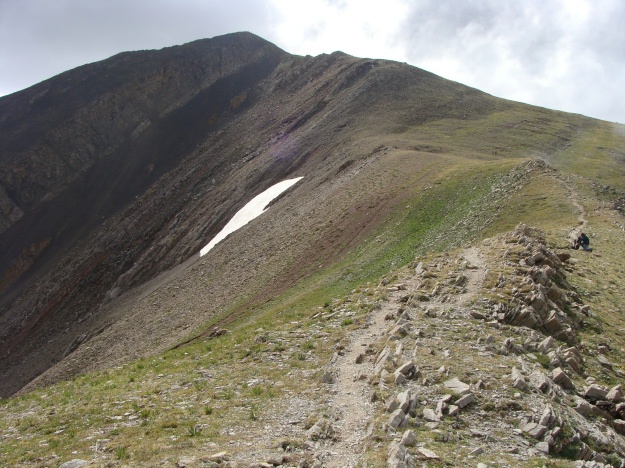After hiking through the Tetons, we continued our tour of Yellowstone by visiting a number of places in the eastern and northern portions of the park. We visited Signal Mountain Summit, which is a great overlook of the glacial outwash plain due to the glaciation of Yellowstone. (However, I was just as fascinated by the little black bear that we saw on the drive up to the summit.) We also stopped at Artist Point, south of Canyon Village. (We actually stayed the night in Canyon Village’s cabins.)
Then, our journey took us to Norris Geyser Basin, Obsidian Cliff, Sheepeater Cliff, and the Mammoth Hot Spring Terraces. All I can really say is “Wow”!!

Above is a scenic view of one section of Norris Geyser Basin, which had some of the most interesting thermal activity in the park.
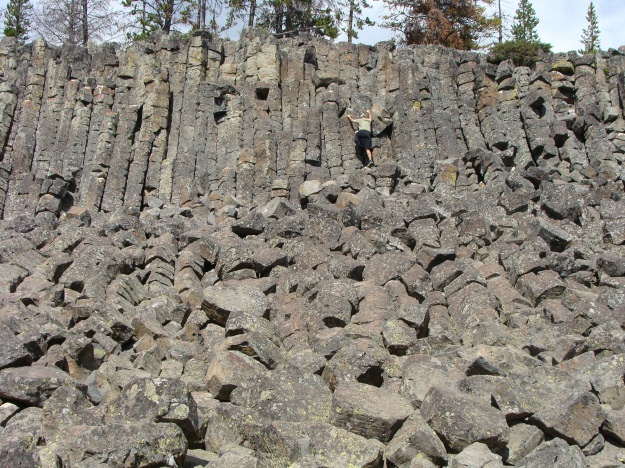
Take a look at Sheepeater Cliff, which is composed of basalts that exhibit columnar jointing. Sheepeater Cliff is a result of the bimodal volcanism that was present in Yellowstone.
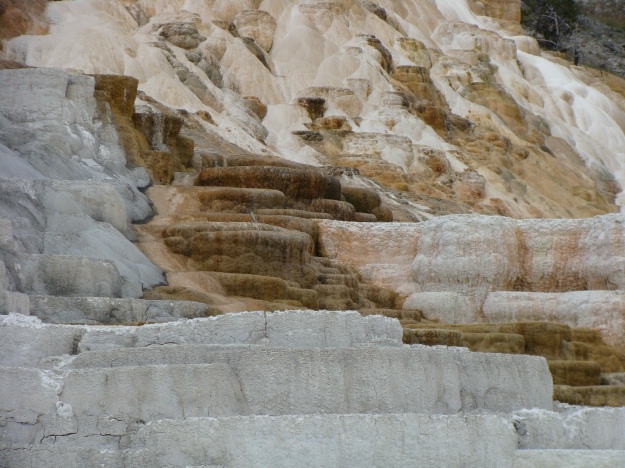
Mammoth Springs provided some wonderful exposures of travertine terraces, several of which were very active.
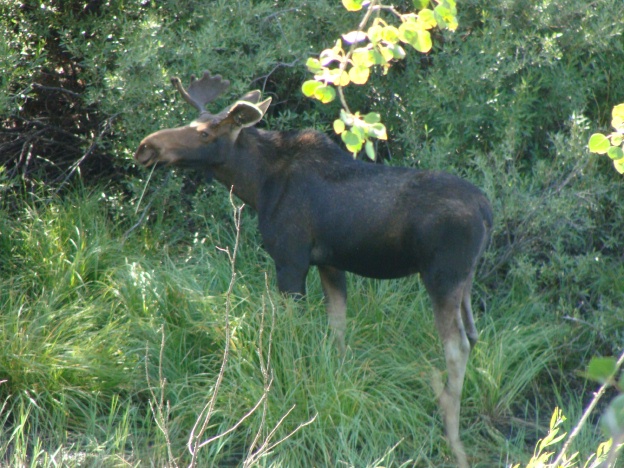
Of course, along our journey we made some friends, such as this moose grazing along the river bank. It was amazing how one creature could tie up so much traffic!!
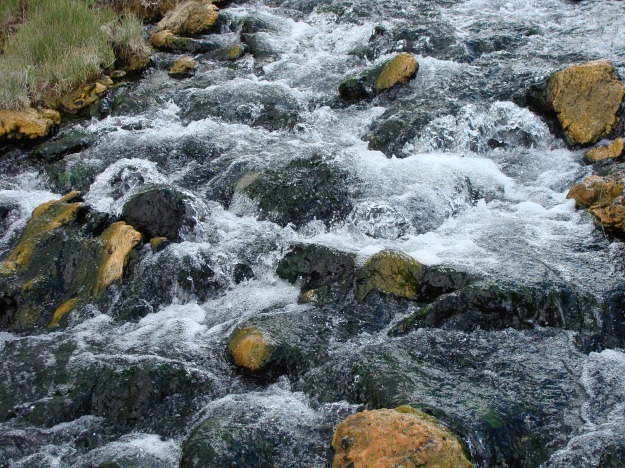
The day ended with a trip to the Gardner River. The picture above shows a small stream of thermally-influenced water flowing into the Gardner River. Along the river bank, temperatures are easily over 100-110 degrees F, and thus many people enjoy one of nature's very own hot tubs. But, if you walk just a few feet out into the main portion of the Gardner, the water is ice cold.




